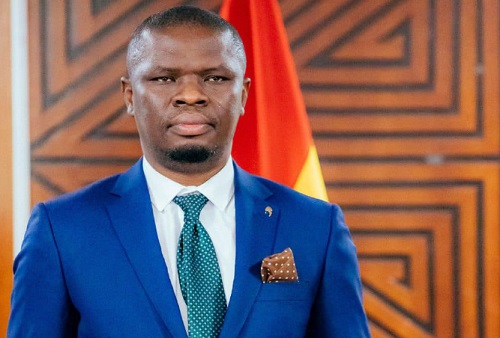Cabinet has approved a new policy for the exploitation, management and regulation of lithium and other green minerals in the country.
Often referred to as “minerals of the future”, green minerals are metals and other mineral resources that are needed to support the transition to clean energy technologies aimed at reducing carbon emissions.
A wide range of minerals that fall under the umbrella of green minerals include bauxite, cobalt, copper, lithium, granite, manganese and nickel.
The Minister of Lands and Natural Resources, Samuel Abu Jinapor, told the Daily Graphic last Thursday that Cabinet approved the policy on July 27 this year after a rigorous interrogation.
The new Green Minerals Policy, thus, amends the Mining and Minerals Policy of 2014 to include robust and progressive regimes that would enable the country to reap optimum benefits from lithium and other green minerals.
Mr Jinapor said the new policy would lead to legislative interventions by Parliament, including an amendment of the Minerals and Mining Act, 2006 (Act 703), with the relevant processes already begun.
For instance, he said, while Act 703 set the rate for mineral royalties at between three and five per cent, the new policy would see a different royalty regime for green minerals.
“I wrote to the Chief Executive Officer of the Minerals Commission last week and asked him to present to me a strategy document within a week for the implementation of the tenets of this policy. We want to get on with this as quickly as possible,” the minister said.
Policy implications
“For some reasons, I will not give the rate for green mineral royalties yet, but suffice to say that it is going to be higher than what we have now relating to gold. The point is that we will have a different royalty regime for green minerals as opposed to gold and others,” Mr Jinapor said.
The minister also said the new policy would insist on a higher level of local participation in the green minerals value chain as opposed to the 10 per cent vested interest the state had currently in mining entities.
“We will insist on a certain minimum Ghanaian participation that will obviously be more and better than the 10 per cent. I am reluctant to put specific figures out now on this. There is a Cabinet decision on a baseline, and we will not go below that in any negotiation for our lithium and other green minerals,” he said.
Mr Jinapor added that the overarching goal of the new policy was anchored on the principle that the exploitation of green minerals must benefit Ghanaians who were the true owners of the resource.
He said in view of that principle, the building blocks for the green minerals exploitation would be different from what existed with gold in particular.
Value addition
The minister stressed that the focus of the new policy was on value addition to ensure that Ghanaians participated actively in the value chain.
“Therefore, mining and export of lithium in its raw form is a triple no,” he stressed.
Mr Jinapor said the policy was also focused on putting in place incentives and measures to attract the needed investments, adding that stabilisation clauses, development agreements and other measures would be put in place to give investors the comfort to put their resources in the sector.
He said the arrangement would be done in a manner that would ensure a fair balance to have a win-win situation for both the country and the investor community.
“We will do negotiations on a case-by-case basis, and this will be within the context of this new policy,” he said.
Aside from green minerals such as bauxite, manganese, graphite and cobalt, Ghana has discovered commercial quantities of lithium, especially at Ewoyaa in the Central Region.
Lithium
African countries such as Zimbabwe, Namibia, Democratic Republic of Congo and Mali also have commercial deposits of lithium, while Mozambique, Madagascar, Tanzania and Namibia have graphite.
Globally, it is estimated that the lithium industry alone is valued at $11 billion at the mining stage, with the value of the industry at the highest end estimated at $7 trillion.
Against that backdrop, Mr Jinapor said the green minerals policy was specifically targeted at adding value to lithium before exporting it.
He said contrary to reports that some licences had been issued for mining lithium, the government had not given out any licence.
“No person or company has any permit or licence to mine or exploit lithium. The licences that were granted were for exploration, which is different from exploitation,” he stressed.
He said it was through the exploration activities that lithium was discovered in commercial quantities at Ewoyaa.
Mr Jinapor said although the next stage was to mine the mineral resource, the government’s focus was to put in place the policy framework before moving into mining.
Source: GraphicOnline






